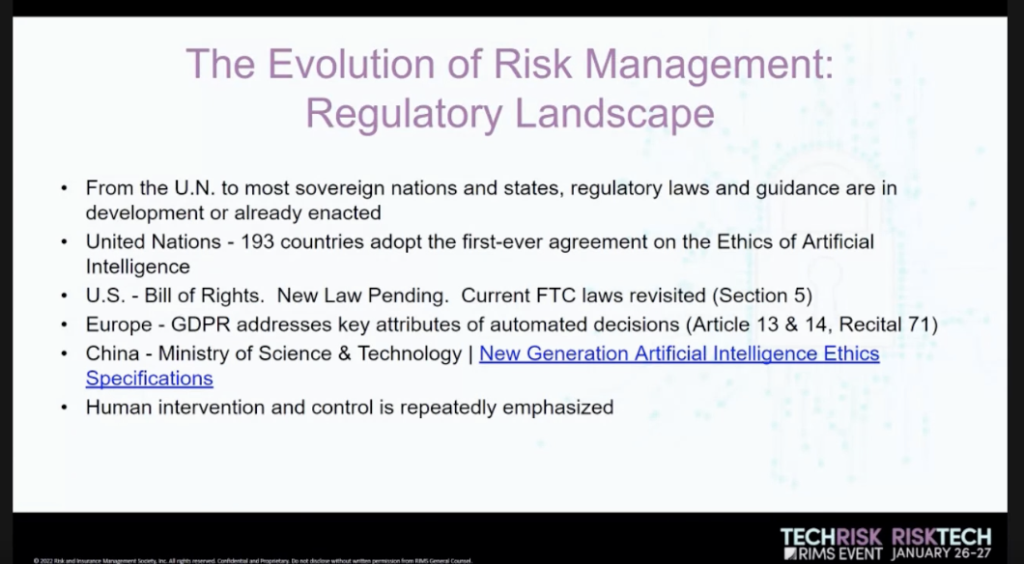Last week, the RIMS TechRisk/RiskTech virtual event featured two days of education content on some of the biggest challenges and opportunities in modern risk management, focusing extensively on cyberrisk as well as risktech—the latest technology tools and techniques for managing risk. As the presentations made clear, technology introduces some of the greatest risks to organizations, but also some of the most promising innovations to introduce or enhance risk management.
“We all know that, ‘As fast as a business develops a strategy to protect their organization’s digital assets, cyber predators have already figured out their next move,’” said Patrick Sterling, vice president of legendary people and risk management at Texas Roadhouse Restaurants and 2022 president of RIMS. “So, risk professionals must do what risk professionals do best: We must adapt. And we must adapt quickly.”
“We can’t forget about the risks that preceded this pandemic, and top on that list stands technology,” Sterling added in his address during the event. “Cyber gets a bad rap—when we talk about risk, we must remember risk can lead to positive outcomes. While greater dependency on technology has opened the door to more threats, it also allows us to improve processes, keep employees safe, boost efficiencies and engage our customers in a whole new way.”
As a RIMS virtual event, the content from TechRisk/RiskTech will be available for attendees or new registrants to view on-demand for the next 60 days, and you can check out the sessions here.
Following the TechRisk/RiskTech event and last Friday’s international Data Privacy Day, risk professionals who want to learn more about cyberrisk and risktech topics can also check out a wealth of related articles from Risk Management Magazine. Whether you would like to keep up the education after attending TechRisk/Risktech or just want to catch up on topics like cyberrisk, ransomware, cyber insurance, risktech, artificial intelligence, the internet of things and connected devices, and other technology that can help manage risk, here’s a roundup of recent Risk Management articles on cyberrisk and risktech:
Tech Risk (Cyberrisk):
- What Are You Doing About Ransomware?
- Cyber Insurance Collaboration
- Ransomware Attackers Turn to Double Extortion
- The Legal Issues in Cyber Incident Response
- Key Considerations When Obtaining Cyber Insurance
- Complying with Multiple Privacy Laws
Risktech:

